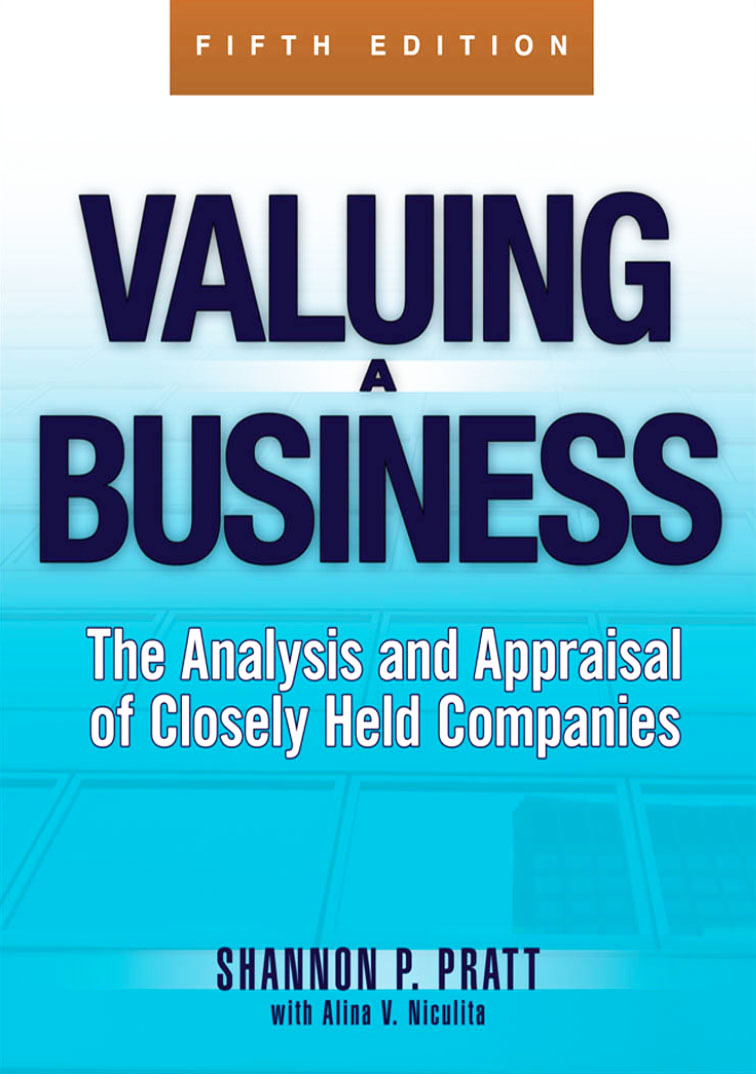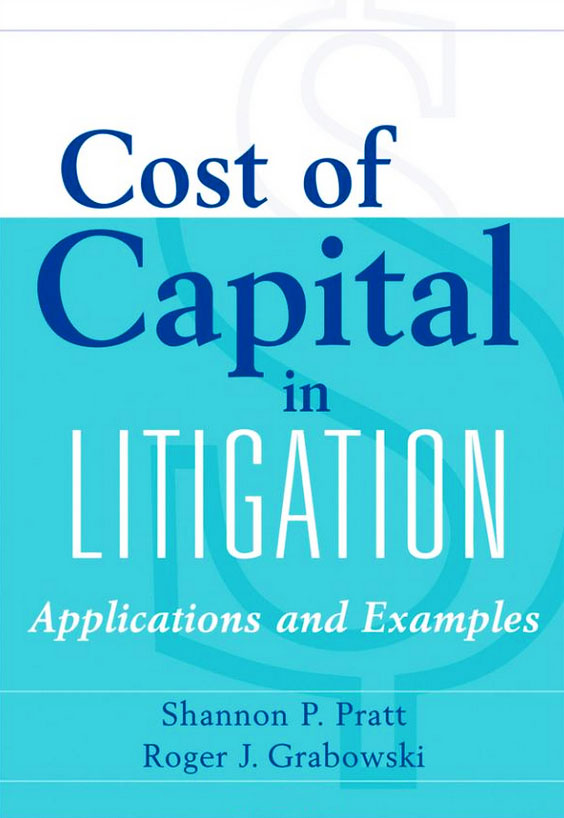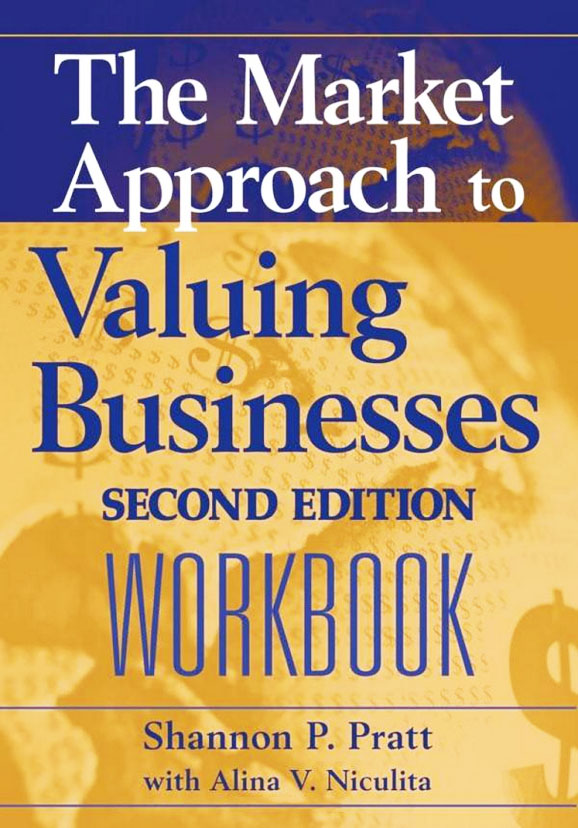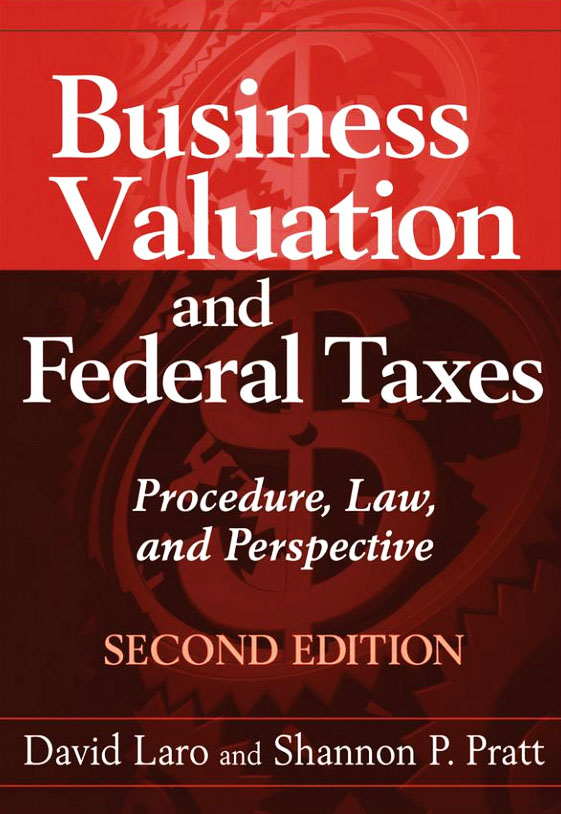Standards of Value: Theory and Applications, 2nd Edition
Table of Contents
Preface
Acknowledgments
About the Authors
Introduction
Chapter 1: Common Standards and Premises of Value
Chapter 2: Fair Market Value in Estate and Gift Tax
Chapter 3: Fair Value in Shareholder Dissent and Oppression
Chapter 4: Standards of Value for Partnership and Limited Liability Company Buyouts
Chapter 5: Standards of Value in Divorce
Chapter 6: Fair Value in Financial Reporting
Appendix A: International Business Valuation Standards
Appendix B: Chart - Fair Value in Dissent and Oppression
Appendix C: Standard of Value in Divorce Classification by State and Standard of Value
Foreword
Preface
Acknowledgments
About the Authors
Introduction
Chapter 1 Common Standards and Premises of Value
Common Standards and Premises
Price, Value, and Cost
Defining a Standard of Value
Premises of Value
Common Standards of Value
Fair Market Value
Fair Value
Investment Value
Intrinsic Value
Book Value
Common Operational Premises Underlying the Standard of Value
Going Concern
Liquidation Value
Fair Value in Alternative Contexts
Fair Market Value in Alternative Contexts
Standards of Value in the International Context
Summary
Chapter 2: Fair Market Value in Estate and Gift Tax
Introduction
Common Definitions of Fair Market Value
History of Fair Market Value
United States v. Fourteen Packages of Pins
Elements of Fair Market Value
Price at Which a Property Would Change Hands
Willing Buyer
Willing Seller
No Compulsion to Buy or Sell
Reasonable Knowledge of Relevant Facts
Common Discounts
Summary
Chapter 3: Fair Value in Shareholder Dissent and Oppression
Fair Value as the Standard of Value in Dissent, Oppression, and Entire Fairness Cases
The Appraisal Remedy for Dissenting Shareholders
History and Overview of the Appraisal Remedy
Appraisal Rights Today
Appraisal Rights in Publicly Traded Corporations: The Market Exception
Fair Value Can Be Less Than Arms’-Length Price
The Oppression Remedy
Development of the Oppression Remedy
Context of Oppression Remedy
Dissolution as a Remedy for Oppression
Shareholder Buyouts as an Alternative Remedy
Examples of Oppression
Fair Value Is the Standard of Value in Appraisal and Oppression in Almost All States
Fair Value as Defined by Various Authorities and Statutes
The Valuation Date—Before the Effectuation of the Corporate Action to Which the Shareholder Objects
Valuation Date in Appraisal Cases
Valuation Date in Oppression Cases
Customary and Current Valuation Techniques
Fair Value in Delaware
Delaware Fair Value Standards
Entire Fairness in Delaware
Components of Fair Value in Delaware
Ohio’s Unique and Unfavorable Standard of Value in Appraisals
Fair Value Normally Excludes Discounts and Premiums
Most States Now Reject Minority and Marketability Discounts
Levels of Value
Discounts at the Shareholder Level
The “Implicit Minority Discount”
No Premiums Are Applicable to DCF Values
Discounts at the Corporate Level
Control Premiums at the Corporate Level
Some States Permit Considering Extraordinary Circumstances in Determining Whether to Apply Discounts
Court Decisions Have Moved toward Rejecting Discounts
Equitable Adjustments to Fair Value
Consideration of Wrongdoing in Calculating Fair Value
Damage Claims
Summary
Chapter 4: Standards of Value for Partnership and Limited Liability Company Buyouts
Introduction
Buyout upon Dissociation
Buyout in Lieu of Dissolution
Dissenters’ Rights
Partnerships and Limited Liability Partnerships (LLPs)
Limited Liability Partnerships
General Partnership Standard of Value Cases
Limited Partnerships
Limited Liability Companies, Generally
Uniform Acts
Buyout in Lieu of Dissolution
Withdrawal and Buyout
Dissenters’ Rights
Professional LLCs
LLC Decisions
Summary
Chapter 5: Standards of Value in Divorce
Introduction
Marital Property: General Background and History
Identification of Marital Property and Separate Property
Relationship between Valuation and Identification of Intangible Assets
Appreciation on Separate Property
Premises and Standards of Value in Divorce
Premises of Value
Standards of Value
Premises of Value Revealed through the Valuation of Insurance Agencies
Concepts of Value under the Two Premises
Standards of Value in Divorce among the 50 States
Lack of Statutory Insight
Revealing Standard of Value through Case Law
Toward a Standard of Value Classification System
Value in Exchange
Goodwill
Lack of Control and Marketability Discounts under Value in Exchange
Fair Value
Buy–Sell Agreements under Value in Exchange
Value to the Holder
Goodwill
Double Dipping
Shareholder-Level Discounts under the Value to the Holder Premise
Fair Value
Buy–Sell Agreements under Value to the Holder
Summary
Chapter 6: Fair Value in Financial Reporting
Introduction
Fair Value in Financial Reporting: What Is It?
Application of Fair Value
History of Fair Value in U.S. Accounting Literature
Application of the Fair Value Standard to Business Combinations
Application of the Fair Value Standard to Asset Impairment Tests
Interpretation of Fair Value Compared to Other Standards of Value
Fair Value in Financial Reporting versus Fair Value in Dissenters’ Rights Cases
Fair Value in Financial Reporting versus Investment Value
Fair Value in Financial Reporting versus Fair Market Value
Audit Issues
Summary
Appendix A: International Business Valuation Standards
Appendix B: Chart - Fair Value in Dissent and Oppression
Appendix C: Standard of Value in Divorce Classification by State and Standard of Value

Valuing a Business: The Analysis and Appraisal of Closely Held Companies, 5th Edition

Cost of Capital, 5th Edition

The Lawyer’s Guide to The Cost of Capital

Cost of Capital in Litigation

Standards of Value: Theory and Applications

The Best of Shannon Pratt

PPC's Guide to Business Valuations

Valuing Small Businesses and Professional Practices, 3rd Edition

The Market Approach to Valuing Businesses, 2nd Edition

Business Valuation Discounts and Premiums, 2nd Edition

The Lawyer's Business Valuation Handbook, 2nd Edition

Business Valuation Body of Knowledge: Exam Review and Professional Reference, 2nd Edition

Business Valuation and Federal Taxes: Procedure, Law, and Perspective, 2nd Edition

